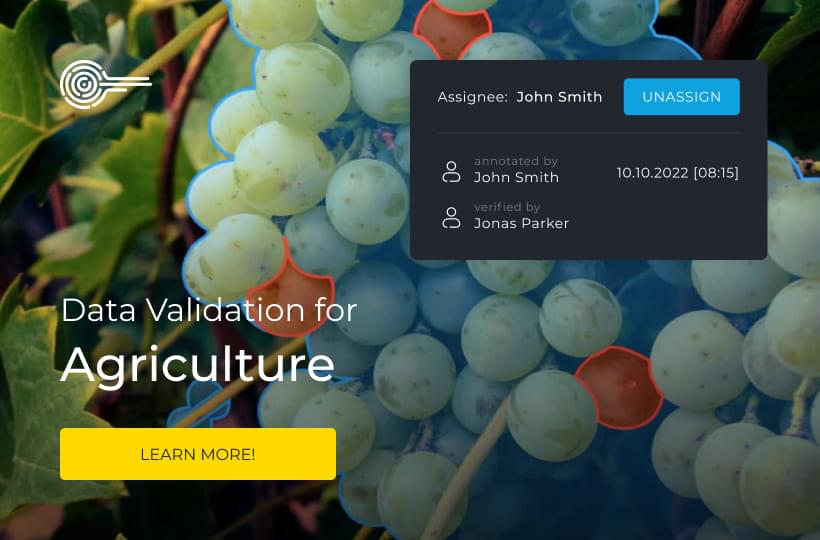Measuring Annotation Throughput: Identifying Bottlenecks and Accelerating Delivery
Evaluating annotation performance involves analyzing how efficiently annotators perform their tasks, identifying problem areas, and optimizing turnaround times. Teams track the time required for each process step to determine where delays occur, whether due to manual work, software limitations, or insufficient resources.
Initially, information is gathered on how long each step takes to complete, and then attention is focused on the parts where delays or inefficiencies occur. This may be due to outdated tools, unclear instructions, or a lack of team skills. Once the bottlenecks are identified, changes are made, such as automating repetitive tasks, improving communication tools, or enhancing training.
By regularly analyzing and adjusting the process, you can achieve faster task completion, improved quality of results, and more coordinated work. This allows you to cope more efficiently with increasing workloads while maintaining high accuracy.
Key Takeaways
- Refining data annotation processes is critical for improving machine learning models.
- Effective strategies include developing optimized frameworks and leveraging domain-specific expertise.
- Combining automation and staff training can help in delivering high-quality training data efficiently.
- Understanding annotation throughput metrics is essential for identifying bottlenecks and accelerating delivery.

Understanding Annotation Throughput Metrics
Annotation throughput metrics show how quickly annotation tasks are completed. This measure tracks the volume of annotations processed over time, helping to identify the pace at which the work moves. By looking at throughput, it's possible to spot where delays are happening, or the process could be smoother. Whether it's a specific part of the workflow or the tools being used, understanding these numbers helps make adjustments that can speed things up. This approach allows for a more balanced and efficient process, ensuring annotations are done most effectively.
Importance in Data Annotation Workflows
Annotation throughput is vital in data annotation workflows. It directly affects how fast datasets are ready for machine learning models, boosting overall efficiency. The importance of data annotation is immense, as accurate and timely annotations are critical for model training. Metrics like Cohen's Kappa, which gauges agreement among annotators, also ensure annotation reliability. By concentrating on throughput, teams can optimize their workflows and enhance productivity.
Key Components of Annotation Throughput
Annotation throughput consists of several key elements that directly affect its effectiveness: the speed at which annotations are created, the tools used, and the clarity of the instructions followed.
Quality Control Measures
Ensuring high-quality annotation is essential for AI model reliability. This involves both automated and manual checks to guarantee accurate labeling. Quality control steps include:
- Inter-annotator agreement (IAA) metrics like Cohen's kappa and Fleiss' kappa to gauge annotator consistency.
- Using Krippendorf's alpha for datasets with incomplete or partial agreements.
- Employing F1 scores to measure success by combining precision and recall.
By prioritizing time efficiency and robust quality control, we maximize data annotation speed without sacrificing the accuracy of AI training datasets.
Identifying Manual Errors
Manual errors in annotation arise from human mistakes or inconsistent labeling. To tackle these issues:
- Implement rigorous quality assurance by conducting regular reviews and spot checks.
- Utilize efficient rework procedures, as manual rework often proves more time-intensive than initial labeling.
- Ensure annotators undergo thorough training to meet project standards.
Tools and Technology Limitations
Outdated or insufficient tools worsen data annotation bottlenecks. The limitations of annotation tools include:
- Inefficient interface designs that hinder fast and accurate labeling.
- Limited automated features require extensive manual input.
- Incompatibility with diverse data types is necessary for inclusive dataset preparation.
Upgrade to advanced annotation tools with automated features and better interfaces. Robust software solutions directly tackle tool limitations, reducing time per label and increasing efficiency.
Automation Techniques
Automation in annotation is key to reducing manual labor in repetitive tasks. Techniques like hierarchical labeling systems organize labels into structured frameworks. This approach contains errors within specific branches, reducing the impact of misclassification.
Like uncertainty sampling, active learning techniques focus on data points where the model is uncertain, sharpening performance.

Importance of Data Quality in Throughput Metrics
Ensuring data quality in annotation throughput is vital for AI performance reliability. Achieving a balance between data quality and speed is critical. Gartner notes that poor data quality costs companies an average of $12.9 million annually. High-quality data boosts AI accuracy and cuts operational costs.
Relationship Between Quality and Speed
We use cyclical error checking and discussion to speed up the annotation process. This reduces the time required to complete tasks while maintaining the necessary level of accuracy and detail.
Techniques for Ensuring Data Integrity
Effective data integrity techniques are essential to avoid errors and lower costs. For example, IBM reported in 2016 that data quality issues cost the U.S. $3.1 trillion. Using AI-assisted tools and honeypot tasks can monitor and enhance annotator performance. UnitedHealth Group's Data Quality Assessment Framework (DQAF) emphasizes the importance of data completeness, timeliness, validity, and consistency.
Analyzing Throughput Metrics Effectively
We must focus on key performance indicators (KPIs) and the tools to analyze throughput metrics effectively. These tools help us measure and diagnose accurately. An approach centered on data and insights is key to optimizing our annotation processes and allowing us to meet performance goals more effectively.
Tools for Measurement and Analysis
Effective measurement and analysis of throughput metrics require advanced annotation measurement tools. These tools offer capabilities like:
- Real-time data monitoring: Allows for immediate adjustments to enhance efficiency.
- Visualization of data: Helps us communicate findings clearly and identify trends quickly.
- Comprehensive reporting: Enables detailed analysis and strategic decision-making.
Cross-Departmental Communication
Cross-departmental communication is vital for successful annotation projects. When data scientists, project managers, and annotators work together, processes become smoother and faster. This unity brings several benefits:
- Aligned project objectives
- Reduced errors and miscommunications
- Enhanced project coordination
Feedback Loops with Stakeholders
They help teams adjust to changing needs and ensure the output meets standards. Proper feedback mechanisms lead to the following:
- Continuous improvement and iteration
- Enhanced data integrity and accuracy
- Optimized resource allocation
This iterative approach allowed us to address issues promptly and refine our processes to meet stakeholder expectations better.
When we prioritize collaboration in annotation, throughput significantly improves. Leveraging communication across departments and stakeholder feedback ensures everyone is aligned with project goals. This alignment boosts throughput and project success.
Feedback loops with stakeholders are also critical, as seen in a case where annotator performance was vital for machine learning model precision.
Future Trends in Annotation Throughput Metrics
The rapid development of artificial intelligence and machine learning will change the future of annotation processes. These technologies will change approaches to measuring and improving annotation performance. Essential is the introduction of automated and semi-automated annotation methods, which, thanks to sophisticated models and algorithms, allow faster data processing while maintaining high accuracy.
Summary
The growing demand for high-quality annotated data is increasing the popularity of annotation markets and outsourcing services. They offer scalable solutions for large projects. New domain-specific tools are expected to provide accurate and consistent industry annotations.
Such tools are essential for medical imaging, autonomous driving, and financial risk analysis, where data integrity must be maintained. Powerful text annotation tools will continue gaining popularity as they are essential for developing complex NLP applications in healthcare, finance, and customer service. These trends will help annotation strategies meet future requirements by ensuring innovation and efficiency in creating data for AI training.
FAQ
What is annotation throughput, and why is it important?
Annotation throughput measures how quickly and efficiently data annotations are done. It's key for fast, accurate machine learning model training. It also helps reduce bottlenecks in NLP projects and speeds up model training.
How is annotation throughput measured?
It's tracked through KPIs like turnaround time and error rate. Advanced data analytics tools offer insights for strategic decisions. They help adjust processes in real time to boost efficiency.
Why is data quality important in annotation throughput metrics?
High data quality is vital, even when speeding up annotation. Techniques like iterative review and AI tools ensure data integrity. This is essential for reliable AI applications.
What are the common bottlenecks in annotation processes?
Manual errors and outdated tools are common bottlenecks. These issues slow down annotation efficiency and project timelines.
How can annotation throughput be improved?
Improvement comes from adopting automation and continuous staff training. Automation handles repetitive tasks efficiently, while well-trained staff can precisely perform complex tasks.
What role does collaboration play in increasing annotation throughput?
Collaboration through cross-departmental communication and feedback loops is key. It ensures everyone is aligned with annotation goals, leading to quicker adjustments and better project dynamics.
What are some advanced tools used for measuring and analyzing throughput metrics?
Advanced data analytics tools measure and analyze throughput metrics. They offer insights into KPIs like turnaround time and error rate. This helps in making strategic decisions to boost efficiency.
How do automation techniques enhance annotation throughput?
Automation streamlines repetitive tasks, reducing time and manual errors. This leads to faster data processing and improved throughput.
What are the future trends in annotation throughput metrics?
Future trends include AI and machine learning advancements. These will bring better automation and analytical tools. They will redefine annotation throughput metrics, driving efficiency and innovation in AI training data solutions.
Provide examples of successful annotation throughput improvements from other industries?
Case studies from various industries show the benefits of strategic tool integration and workflow optimization. Lessons from leading companies offer insights into improving annotation processes through better throughput.
